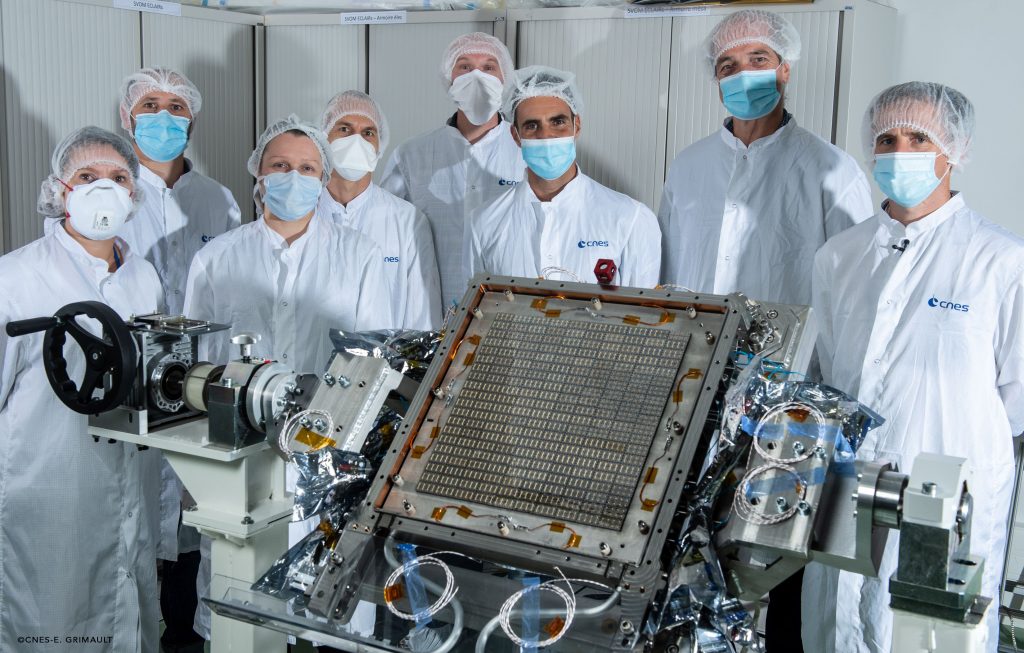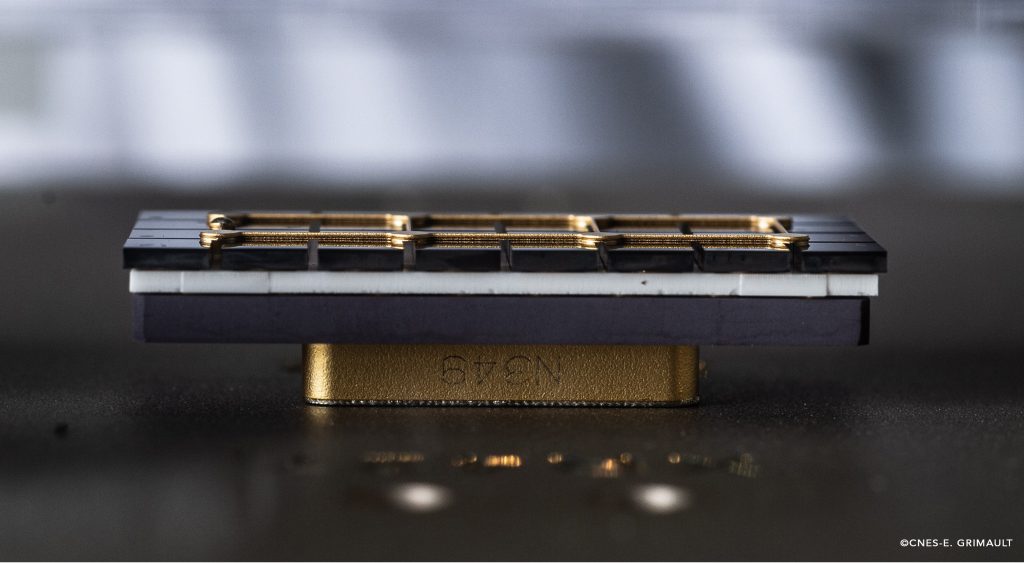Delivery of DPIX to CNES, the eyes of the camera ECLAIRs
The DPIX detection plan was delivered to CNES by IRAP, after several years of development that saw a succession of complex realization steps and tests, resulting in a perfectly operational system.
With its 6400 X-ray and gamma-ray detectors, which constitute as many eyes for the ECLAIRs camera (see figure), it will bring to the latter an unequalled sensitivity to the brief “gamma ray bursts” produced by the explosion of massive stars at the end of their lives, which give rise to mysterious black holes. ECLAIRs will thus be able to fulfill its role as a “watchdog” for the SVOM1 satellite, which will automatically orient itself in the direction indicated by ECLAIRs to study, with its other instruments, these energetic phenomena that so intrigue astrophysicists.
The delivery of DPIX represents a crucial step forward in the construction of the ECLAIRs instrument, which will continue over the coming months with the integration of the other subsystems: the mechanical structure, the coded mask that casts its shadow on DPIX and the on-board computer that will enable the signals received by the 6400 detectors to be analyzed to detect the arrival of a gamma-ray burst and to locate it.
1 http://naruto.hosting-cea.net/


IRAP Contact
- Jean-Luc Atteia, Jean-Luc.Atteia@irap.omp.eu
- Carine Amoros, Carine.Amoros@irap.omp.eu
- Roger Pons, Roger.Pons@irap.omp.eu






